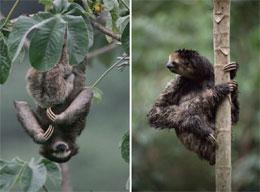
This Saturday December 5th at 2:00 PM: Join us for a nice Saturday afternoon walk at Coal Oil Point Reserve, a nature reserve owned by UCSB.
During the walk, find out more about interesting, meaningful, and fun local environmental research, management, conservation, and education programs, as well as volunteer and internship opportunities! Invite your friends and family too.
Trained tour leader will take you on a walk through a few of the Reserve’s ecosystems: from sandy beach to the Devereux Slough to a restored coastal dune system. Learn about the Reserve's current restoration projects and its cultural and geologic history while identifying flora and fauna-such as the Snowy Plover, Coast Golden Bush, and the Globuse Dune Beetle-that make their home at Coal Oil Point. $5 donation suggested, except for students and Reserve volunteers.
Tours occur twice a month on the first and third Saturday from 2:00 pm to 4:15 pm. Tours for groups or classes over five people are available by appointment.
Reservations for tours are required. Contact Ofri Gabay via email at
gabay@lifesci.ucsb.edu or via phone at (805) 636-8408 to reserve a spot. Ofri will send you a confirmation email with more information.
PLEASE BRING: sun protection, sturdy shoes, water, and binoculars.
SUGGESTED DONATION: $5, except for students and Reserve volunteers.
DIRECTIONS:
Coal Oil Point Reserve is located near UCSB in Goleta. The closest major cross streets are El Colegio and Storke Rd. For a map of the area, visit:
http://coaloilpoint.ucnrs.org/subpage1/Maps/Area.htmlFrom 101 North:
Exit on the Glenn Annie/Storke Rd exit. Turn LEFT. Go through 4 stop lights. The 5th light is El Colegio. Continue straight through this light. After the intersection, Storke Road turns into Slough Road. Continue on this road for .8 miles until you reach a dirt parking lot. Important note: there are several turn off spots on Slough Road. Stay on the road that hugs the Devereux Slough (the body of water on the right side of the road) until you reach the dirt parking lot.
From 101 South:
Exit on the Glenn Annie/Storke Rd exit. Turn RIGHT. Go through 3 stop lights. The 4th light is El Colegio. Continue straight through this light. After the intersection, Storke Road turns into Slough Road. Continue on this road for .8 miles until you reach a dirt parking lot. Important note: there are several turn off spots on Slough Road. Stay on the road that hugs the Devereux Slough (the body of water on the right side of the road) until you reach the dirt parking lot.
If walking or biking from Isla Vista or UCSB:
Take Del Playa (in IV) west to Camino Majorca, the western most street in Isla Vista. At this intersection, head towards the bluff, and you will see a dirt trail that runs along the bluff top. Take this trail along the bluff for five minutes until you reach a group of buildings. There are bike racks near these buildings for you to lock your bike.
PARKING:
The Slough Road will dead-end at a dirt parking lot with a metal gate at the end. This is the outside parking lot: DO NOT PARK HERE. You will get a parking ticket! There will someone at the gate to guide you to an inside parking lot.
*******Parking at Coal Oil Point is limited! If you are visiting the reserve with a group, please carpool or ride bicycles if possible.*******
TOUR MEETING PLACE:
We will meet at the picnic benches in front of the Cliff House. After parking, head down the dirt road towards the ocean. There will be a sign to guide you to the meeting place.
If you are on bike, you will see the picnic benches on your left just before you park your bike.
You will need to fill out a waiver before heading out on the tour.
LATE ARRIVALS:
The tour will begin promptly at the tour start time. 15 minutes after the tour start time, the gate will be closed and you can no longer park in the inside parking lot. If you park in the outside lot, you will be ticketed!
CANCELED TOURS:
Tours will be canceled if it is raining or there are high winds in Goleta. We will send you an email the morning before the tour, especially if rain is in the forecast, to cancel the tour.
***Please check your email before departing for the tour.***
If you do not receive an email, assume that the tour will continue as scheduled.
Tours are a program of Shorelines & Watersheds - a 501 (c)(3) nonprofit organization - and Coal Oil Point Reserve. Funding for the Tour Program is provided by the Coastal Fund and Venoco Inc.



































